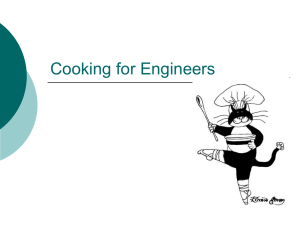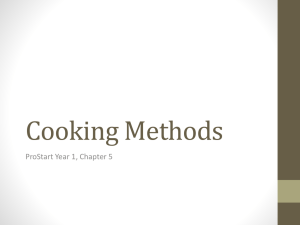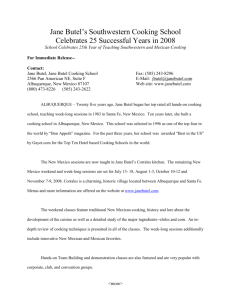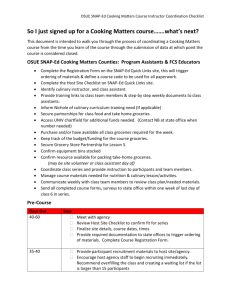Backward Design - Purdue University
advertisement
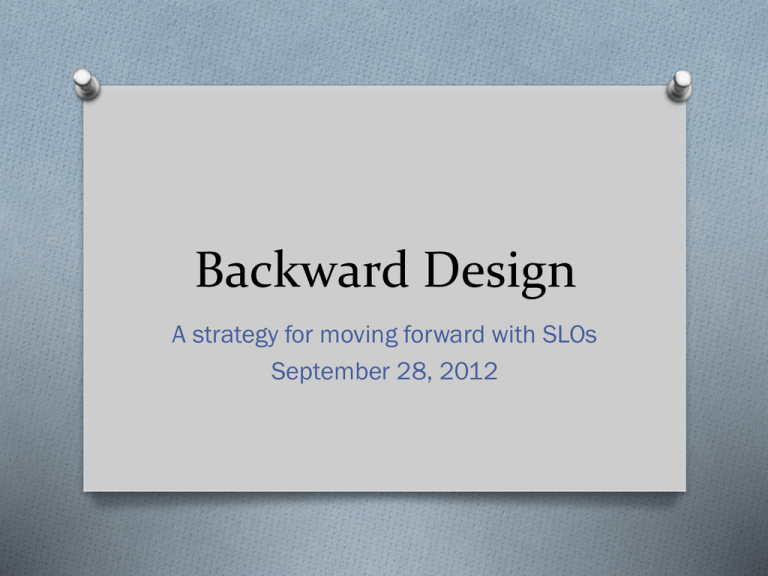
Backward Design A strategy for moving forward with SLOs September 28, 2012 How would you feel? O You meet a student who participated in your program one year ago. You ask her, “What did you learn from my program?” Of all of the things she could say she learned, what three things would you be the most disappointed to hear that she did not learn from your program? What were your answers? O Your answers to that question are the keys to writing quality student learning outcomes. O They are also an integral part of an instructional design technique, backward design, developed by Grant Wiggins and Jay McTighe. What is backward design? O We call it backward design. Instead of jumping to the activities -- '"Oh, I could have kids do this, oh, that'd be cool" -- you say, "Well, wait a minute." Before you decide exactly what you're going to do with them, if you achieve your objective, what does it look like? What's the evidence that they got it? What's the evidence that they can now do it, whatever the "it" is? So you have to think about how it's going to end up, what it's going to look like. And then that ripples back into your design, what activities will get you there. What teaching moves will get you there?" O - Grant Wiggins An Overview O University of Wisconsin professor, Erica Halverson, explains how backward design works. A three step process: O 1. Identify desired results. O 2. Determine acceptable evidence. O 3. Plan learning experiences and instruction. Step One: Identify Desired Results O What should students know, understand, and be able to do? O What big ideas are worthy of understanding? O What “enduring” understandings are desired? O What specific knowledge and skills are needed for effective performance? Prioritize desired results/learning O Step one may be easier if you prioritize student learning into three areas of increasing importance: O Information that is worth being familiar with O Information and skills that are important to know and to do O Information and skills that represent "enduring" knowledge, or knowledge that students will remember years after participating in your program. Priorities for learning Worth being familiar with Important to know & do Enduring knowledge Step Two: Determine acceptable evidence O Thinking about design in terms of assessment, ask the following questions: O How will we know if students have achieved the desired results ? O What is acceptable as evidence of proficiency? O How will we know that students really understand the identified big ideas? Step Three: Plan learning experiences & instruction O Once you've identified the desired results and determined appropriate evidence, ask yourself: O What experiences and activities will best support your desired result? O What aspects of your program contribute to its desired results, and how are those best measured? An Overview of the process Goals Activities Assessment But how does this help me with SLOs? O Although you will not be redesigning your programs, the principles of backward design can help you to focus on your program’s goals and to map your SLOs to the relevant CAS dimensions. Example: Cooking Class O Step One: Identify desired results: O Students will be able be to identify and make healthy choices when shopping for groceries. O Students will understand how to economize when shopping for groceries. O Students will be able to demonstrate basic cooking techniques such as boiling, baking, and stir-frying. Example: Cooking Class How would you classify each of the desired results on the right? O Worth knowing O Important to know & do O Enduring knowledge O Students will be able to identify and make healthy choices when shopping for groceries. O Students will understand how to economize when shopping for groceries. O Students will be able to demonstrate basic cooking techniques such as boiling, baking, and stir-frying. Example: Cooking Class Economize Healthy Choices Basic Techniques Example: Cooking Class O Step Two: Determine acceptable evidence. O What is acceptable evidence that students can demonstrate basic cooking techniques such as boiling, baking, and stir-frying? O Final performance assessment based on rubric O Pre and post student self-evaluation survey Example: Cooking Class O Step Three: Plan learning experiences & instruction O Basic chopping & peeling demonstration & hands on activity O Demonstration & hands on activities for basic techniques covered O Small group performance based mini-quizzes O Watch cooking videos Translate the process into a SLO: O As a result of completing this course, students will demonstrate basic cooking techniques such as boiling, baking, and stirfrying as evidenced by a score of 90% or higher on the final performance-based assessment and by 90% of students reporting an increase in cooking skills based on a comparison of the pre and post student self-evaluation surveys. Mapping to CAS Dimensions O Dimension 1: Understanding knowledge from a range of disciplines. O Dimension 4: Relating knowledge to daily life. 5 Steps for writing SLOs: O 1. Identify a program's take away goals. O 2. Identify possible and/or existing methods to assess one of those goals. O 3. Identify the activities/experiences that most support one of those goals. O 4. When you write a SLO, include the information from steps one through three in the SLO. O 5. Map your SLO to those CAS Dimensions that relate directly to the goals you identified in step one.
